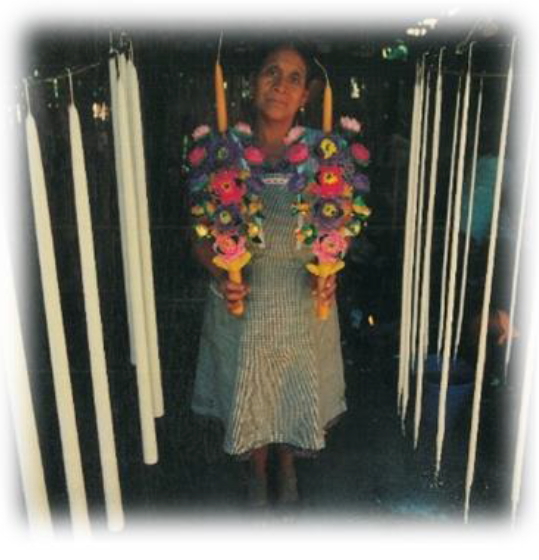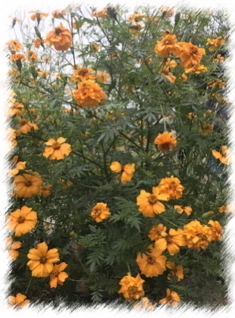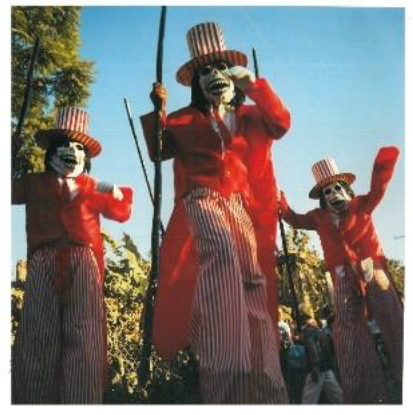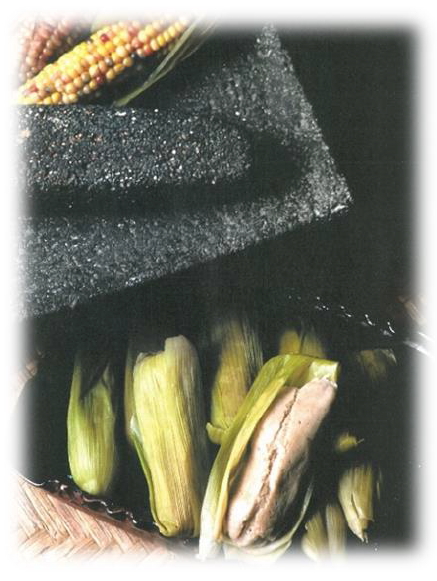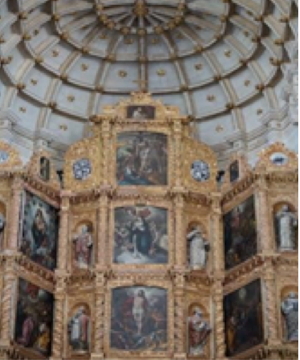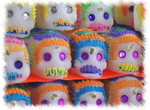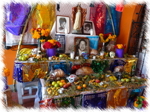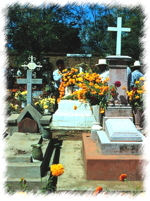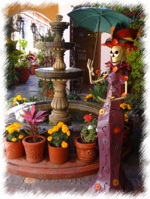The Day of the Dead in Oaxaca 2020
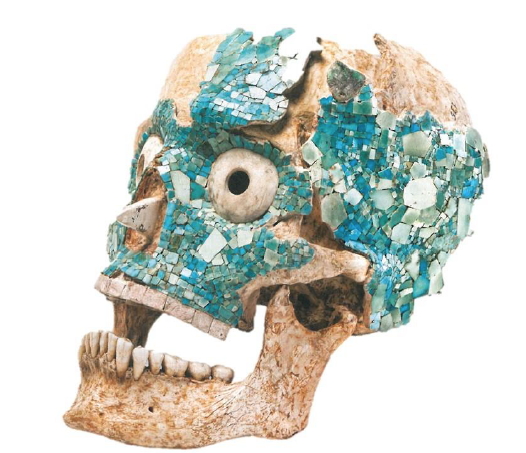 | ||
| In all of Mesoamerica, Oaxaca has some of the richest funeral architecture. It also has the largest number of known prehispanic tombs. For example, just in Monte Alban, we have more than 200. The tombs were the way to express the social position that buried individuals had when they were alive. At the same time, they contribute to the social cohesion with the cult of the ancestors. In the tombs, they buried each successive generation of the family and the decorations identified blood ties between the people they buried and those still alive.
Mesoamerican peoples practiced a rich variety of funeral rites (actions performed after the death of an individual) based on a fundamental and widely shared vision of death as a regenerative social and cosmic power. The mortuary rites with their goal of disposing of the body have been around since the beginning of humanity and highlight the similarities and differences among the societies through time and space. The oldest tomb in the Oaxaca region is tomb #10 from San José el Mogote. It was built circa 700-500 B.C. and we can find elements that we will see repeated later in tombs from the Classic or Postclassic period. An excellent example of the complexity that funeral architecture reached is the tomb #5 from Huijazoo, the biggest and the most elaborated discovered so far in Oaxaca. The funeral tradition continued until the conquest. | ||
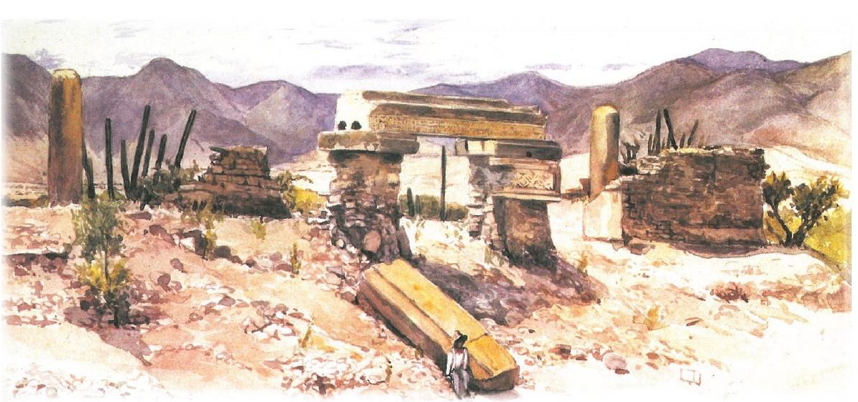
| ||
|
Friday 30th Oaxacan tombs 9:00 Departure to Mitla The zapotec name is Lyobaa that it means rest area. The archeological data indicate that in the Classic period, the burials in Central Valleys were not in cemeteries.9:00 Departure to Mitla. The zapotec name is Lyobaa that it means rest area. The archeological data indicate that in the Classic period, the burials in Central Valleys were not in cemeteries. 10:00 We arrive to the archeological site. In Zapotec culture, the mortuary rites allowed to create and promote a social memory. The commemoration of the ancestors played an important role in the identity process, transfer of properties and privileges between generations, and the continuation of the social system. (Urcid, 2004). Mitla is famous for its lavish funerals and the cross-shaped tombs placed under the palaces. 11:30 Teotitlán del Valle After we leave the archaeological zone of Mitla, we will head towards Teotitlán del Valle where we will have a demonstration on dyes used to color the wool rugs and other fibers incorporated more recently by artisans of the community. | ||
| ||
| Saturday 31 The skulls of the day of the dead The figure of the skull was represented from prehispanic times in various forms, such as the Tzompantli, an altar to death that illustrates the traditional passage from the earthly to the spiritual. In fact, the writer and museographer, María Susana Victoria Uribe, affirms that the sugar skulls have their origin in the tzompantlis and in the altars that our ancestors placed in the offerings that they dedicated to the dead, where they placed amaranth and wasp honey. With the arrival of the Spaniards sugar is introduced and in the XVII century the Sephardic migrants bring the technique of alfeñique. The alfeñique sweetshop in Mexico continues to survive to this day through family workshops; It produces true works of popular art, which, although we see and taste the days of the dead, we do not give them their due importance as aesthetic creations. 10:00 Departure to the archaeological zone of Zaachila. During the Postclass, in the Central Valleys of Oaxaca that had been occupied only by the Zapotec for centuries, saw the arrival of Mixtec groups. Examples of the presence of these groups and the relevance they had acquired are the reuse of tomb 7 of Monte Albán and tombs 1 and 2 of Zaachila. In tomb 1, a Mixteco lord named 9 Flor who married a Zapotec noble was buried. The interior of this tomb is decorated with seven stucco figures representing owls, gods of death, a priest and the lords 5 Flor and nine Flor, the latter having been buried in the tomb. Next to his body was that of a young man and in the antechamber the bodies of eight other individuals. Tomb 2 is smaller in size but contained the bodies of 13 individuals, as well as an extraordinary offering with gold objects, vases, turquoise mosaics and engraved bone foliages similar to those of tomb 7 at Monte Albán. 10:40 We will take a short tour of the market to buy our delicious pan de muerto as well as sweet skulls for the altars. We will buy flowers for the altars. 12: 00 Lunch in the Chapel. 14:00 Return to the city of Oaxaca. | ||
| ||
| 10:50 Departure from the Ocotlán market to visit a small town of Santo Tomás Jalietza where the craftsmen and women weave cotton fibers using the waist loom. We will arrive at approximately 11;30 and we will visit the house of the Navarro family (Crispina, Inés, Gerardo) where we will taste a delicious tamale de mole in totomoxtle. 12:30 we will eat at the restaurant La Zapoteca. | ||
| ||
| Monday November 2 The Food on the day of the dead | ||
| ||
Mixteca Alta 9:00 Departure to Yanhuitlan A temple and Dominican convent located in the Mixteca Alta.The plain where this property is located was occupied from the Pre-Classic to the Post-Classic period. 10: 20 We will arrive at the market of the community of Nochixtlán, those who like it will be able to taste the "masita" and the barbecue, a typical dish of this area. 11:15 Visit the Dominican temple, its impressive altar, its altarpieces and its organ make this visit very rewarding. We will visit the monastery that is currently the museum where some pieces of ceramics are exhibited and a facsimile of the Yanhuitlán codex that tells us about the history of the site. From the terrace of the convent we can appreciate the Cerro Jazmín place of prehispanic settlements. In the prehispanic and viceregal period, the Mixtec language prevailed with minor nuclei of speakers of Trique, Amuzgo and Chocho. The area is circumscribed within the other linguistic borders established by groups of popolocas and Mazatecas to the north, Cuicatecos to the northeast, Zapotecs to the east, Chatinos to the southeast, Nahuas to the northeast, as well as Tlapanecos and Ayacastecos to the southeast. The Nochixtlán Valley Yanhuitlán is watered by springs that pour their waters into the Grande River tributary of the Papaloapan. However, specifically to the north of Yanhuitlán is the Posoltepec spring, known as Boca de León, in front of Cerro Mundey, where the Río Negro de Yanhuitlán is formed. Yanhuitlan in Nahua is Yodzocahi in Mixtec and means new earth, broad plain, large extended feather or feather mat. The name aptly describes the wide plain of the Mixteca Alta. |
|
|
|
Tuesday November 3 9:30 We leave the hotel for the visit of San Antonino Castillo Velasco and take pictures of their tombs decorated with flowers. This cemetery is one of the most attractive in the Central Valleys. |
|
The Day of the Dead 2020 | |

| |
| |
